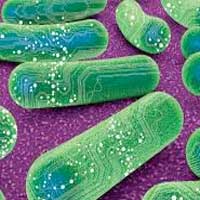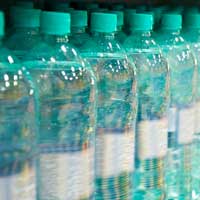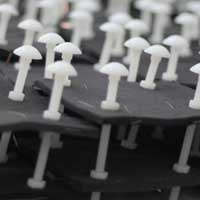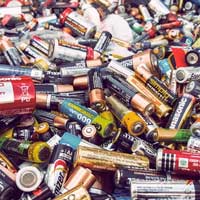 Assessing the environment's prospects in a fast-changing world requires the consideration of emerging trends. A series of joint European Environment Agency (EEA) and Eionet briefings, published today, explores the potential environmental and policy impacts from four emerging technological innovations.
Assessing the environment's prospects in a fast-changing world requires the consideration of emerging trends. A series of joint European Environment Agency (EEA) and Eionet briefings, published today, explores the potential environmental and policy impacts from four emerging technological innovations.
Nov 21st, 2020
Read more
 Scientists have presented a method to visualise convection in the electrolyte and to reliably simulate it in advance with a multiphysics model. The results can support the design and scaling up of this technology.
Scientists have presented a method to visualise convection in the electrolyte and to reliably simulate it in advance with a multiphysics model. The results can support the design and scaling up of this technology.
Nov 20th, 2020
Read more
 Bioplastic has some apparent advantages: it is usually made from recycled material or plant cellulose, it can be biodegradable - or both. But a new study shows that it is not non-toxic.
Bioplastic has some apparent advantages: it is usually made from recycled material or plant cellulose, it can be biodegradable - or both. But a new study shows that it is not non-toxic.
Nov 18th, 2020
Read more
 New study develops a novel eco-friendly buffer for solar panels, which could tip the scale in the renewable energy transition.
New study develops a novel eco-friendly buffer for solar panels, which could tip the scale in the renewable energy transition.
Nov 11th, 2020
Read more
 The GEOSX simulator will enable researchers around the world to build on the work of the three partners, providing an open framework to accelerate the development of carbon capture, utilization and storage technologies. It also has application to a variety of other subsurface energy technologies.
The GEOSX simulator will enable researchers around the world to build on the work of the three partners, providing an open framework to accelerate the development of carbon capture, utilization and storage technologies. It also has application to a variety of other subsurface energy technologies.
Nov 10th, 2020
Read more
 Scientists are working on sustainable alternatives to metal materials in large power storage systems.
Scientists are working on sustainable alternatives to metal materials in large power storage systems.
Nov 9th, 2020
Read more
 Scientists have discovered a new method that makes it possible to transform electricity into hydrogen or chemical products solely using microwaves - without cables and without any type of contact with electrodes.
Scientists have discovered a new method that makes it possible to transform electricity into hydrogen or chemical products solely using microwaves - without cables and without any type of contact with electrodes.
Nov 4th, 2020
Read more
 Increases in organic solar cells' efficiency can be achieved using luminescent acceptor molecules.
Increases in organic solar cells' efficiency can be achieved using luminescent acceptor molecules.
Nov 2nd, 2020
Read more
 Soil microbial fuel cells proven to be capable of creating energy to filter a person's daily drinking water in Brazil test.
Soil microbial fuel cells proven to be capable of creating energy to filter a person's daily drinking water in Brazil test.
Oct 28th, 2020
Read more
 Researchers develop an efficient, low-energy method for upcycling polyethylene plastic waste into valuable molecules that can be repurposed for further use.
Researchers develop an efficient, low-energy method for upcycling polyethylene plastic waste into valuable molecules that can be repurposed for further use.
Oct 27th, 2020
Read more
 Despite overwhelming enthusiasm for cheaper, more powerful and energy-dense batteries, manufacturers have paid comparatively little attention to making these essential devices more sustainable.
Despite overwhelming enthusiasm for cheaper, more powerful and energy-dense batteries, manufacturers have paid comparatively little attention to making these essential devices more sustainable.
Oct 27th, 2020
Read more
 Engineers have created white paint that can keep surfaces up to 18 degrees Fahrenheit cooler than their ambient surroundings - almost like a refrigerator does, but without consuming energy.
Engineers have created white paint that can keep surfaces up to 18 degrees Fahrenheit cooler than their ambient surroundings - almost like a refrigerator does, but without consuming energy.
Oct 23rd, 2020
Read more
 Scientists have found a way to convert the aromatic substance vanillin into a redox-active electrolyte material for liquid batteries. The technology is an important step towards ecologically sustainable energy storage.
Scientists have found a way to convert the aromatic substance vanillin into a redox-active electrolyte material for liquid batteries. The technology is an important step towards ecologically sustainable energy storage.
Oct 1st, 2020
Read more
 Researchers use membranes that remove salt from water to help 'split' sea water into fuel.
Researchers use membranes that remove salt from water to help 'split' sea water into fuel.
Sep 30th, 2020
Read more
 Air pollution is a major risk factor for health in Europe. EUresearch is helping to find innovative, inexpensive and green solutions for improving air quality, particularly in urban environments.
Air pollution is a major risk factor for health in Europe. EUresearch is helping to find innovative, inexpensive and green solutions for improving air quality, particularly in urban environments.
Sep 28th, 2020
Read more
 A new way to reduce heat penetration through building walls. Application of a phase change material and bubble injections to building walls.
A new way to reduce heat penetration through building walls. Application of a phase change material and bubble injections to building walls.
Sep 28th, 2020
Read more
 What does food really cost? Answers were gained by calculating the ecological follow-up costs of various kinds of food.
What does food really cost? Answers were gained by calculating the ecological follow-up costs of various kinds of food.
Sep 18th, 2020
Read more
 Researchers embarked on a project to test whether they can grow algae for biofuels completely in the dark using solar-generated electricity.
Researchers embarked on a project to test whether they can grow algae for biofuels completely in the dark using solar-generated electricity.
Sep 15th, 2020
Read more
 Assessing the environment's prospects in a fast-changing world requires the consideration of emerging trends. A series of joint European Environment Agency (EEA) and Eionet briefings, published today, explores the potential environmental and policy impacts from four emerging technological innovations.
Assessing the environment's prospects in a fast-changing world requires the consideration of emerging trends. A series of joint European Environment Agency (EEA) and Eionet briefings, published today, explores the potential environmental and policy impacts from four emerging technological innovations.
 Subscribe to our Cleantech News feed
Subscribe to our Cleantech News feed















